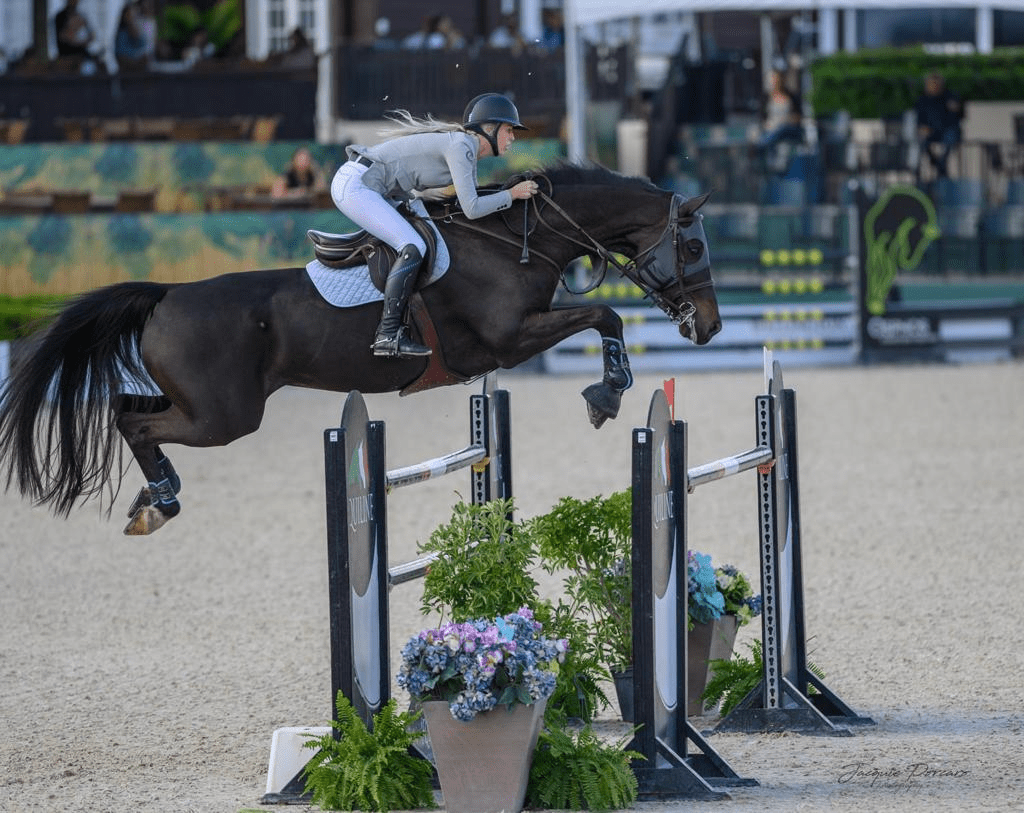One of the greatest fears for a rider is that their once-in-a-lifetime horse will become injured. In 2019, this worry turned into a reality for Rileigh Tibbott who was thinking about retiring her heart horse, Charley. Before making that difficult decision, Tibbott decided to take Charley to Dr. Bryan Dubynsky of Palm Beach Equine Clinic (PBEC) in Wellington, FL, for another opinion. Although it took more than a year, the decision to trust PBEC with Charley’s care ended up changing the outcome of his career as a performance horse.

Tibbott and her show jumping mount Charley, a now 14-year-old Warmblood gelding by Numero Uno, competed together in the Under 25 division and at the FEI three-star level. At the time, the main cause of Charley’s lameness was soreness in his front feet. After meeting with Tibbott and examining Charley, Dr. Dubynsky felt that he could work with Charley’s farrier to help the gelding.
“Instead of doing MRIs or any other diagnostic work I focused on working with Rileigh and the farrier as a team to get him shod properly,” explained Dr. Dubynsky. “My pitch to Rileigh was to fix the foundation on the horse. He was foot sore but I thought most of the issue was due to being improperly trimmed. There was a lot of excess foot on him, and a lot of foot imbalance. He also had some coffin joint compression areas that needed to be alleviated.”
Once Dr. Dubynsky began working with Rileigh’s farrier, the team found success almost immediately and Charley was able to return to the show ring.
Unfortunately, since Charley had gone so long with poor foot balance, he had also developed sidebones, a condition that results in the ossification of the collateral cartilages of the foot. The condition causes the collateral cartilages, which are found on the inside and outside of the foot, to become a harder and less flexible bone. Normally it is not problematic unless the sidebones become excessive. If that happens, a horse can more easily hit themselves in that area and fracture the sidebones causing lameness. At the beginning of 2020, Charley’s sidebones became an issue when he was competing on the grass derby field during the Winter Equestrian Festival in Wellington, FL.
“Charley overstepped taking off to a jump and his hind studs tore through and cut one of his sidebones,” recalled Tibbott. “Unfortunately, after getting stitched up Charley developed an infection. This extended his recovery time and we spent months trying to get him sound again. Charley does not do well with time off so while trying to bring him back from that injury he managed to keep re-injuring himself. The most difficult injury was a suspensory issue in his left hind in April 2020.

“We tried multiple times for many months to start him back but every time it seemed as though jumping would not be an option for him again,” continued Tibbott of Charley’s recovery process. “Dr. Dubynsky knew how much this horse meant to me and really thought outside the box while trying to treat him. I had a few other veterinarians tell me that he needed to be retired but Dr. Dubynsky really fought to get him back in the ring for me.”
Dr. Dubynsky recommended a plan to bring him back slowly rather than giving up. The regimen included frequent check-ups and a close partnership with both the farrier and Tibbott. Dr. Dubynsky also injected areas he felt would help make Charley more comfortable and aid in his recovery.
“We injected his coffin joints and around the sidebones,” commented Dr. Dubynsky. “Most importantly, every several months we would repeat foot x-rays and make sure we were getting a proper balance trim. I always emphasize the trim, not being shod. For me, it’s 90% how you trim the foot and then 10% what you are putting on the bottom of it. The relationship between the vet and farrier was critical during Charley’s recovery process.”

After a total of 19 months, Charley made a full recovery and was able to successfully return to the show ring. Although Charley is now back competing, Dr. Dubynsky continues to check in on Charley regularly and work closely with the farrier to ensure Charley is performing at his best.
“My goal is to have him back in the grand prix ring,” said Tibbott of her plans for Charley. “Without Dr. Dubynsky and our access to such a world-class facility at PBEC, I think Charley’s outcome would have been very different.”
